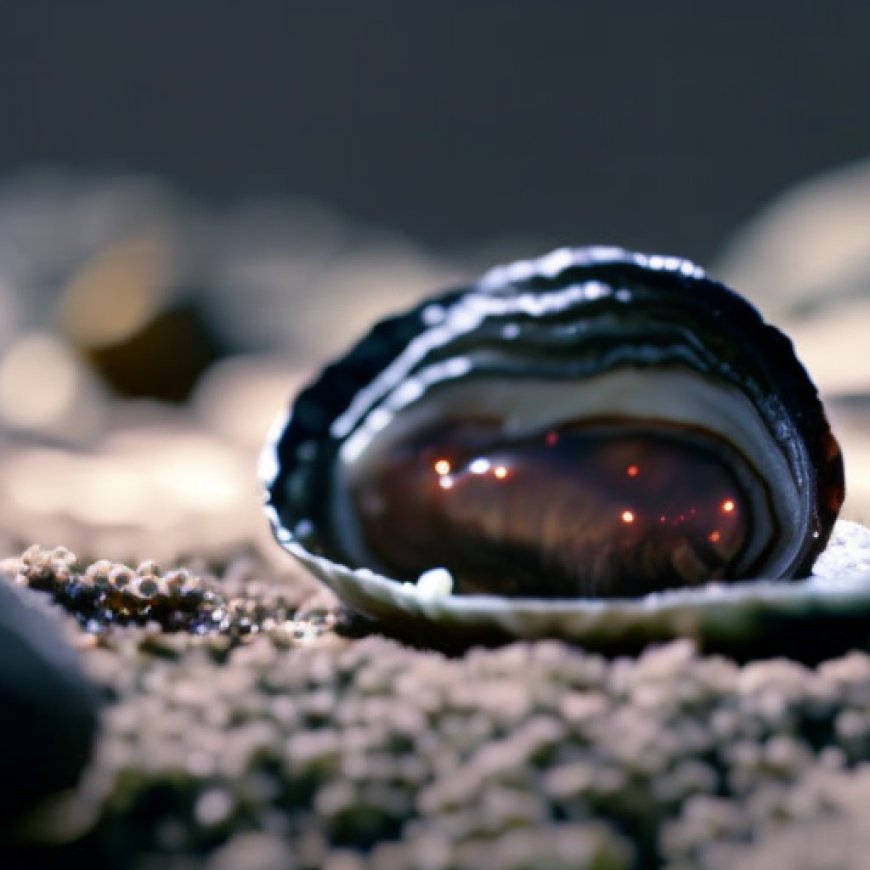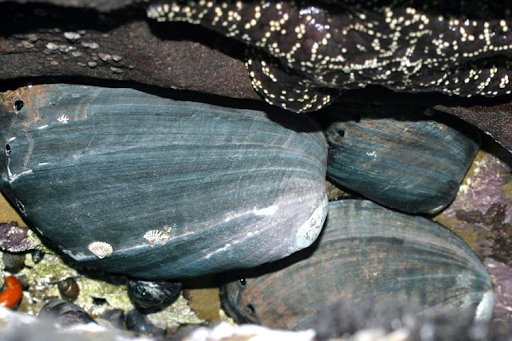Climate Change Threatens the Survival and Recovery of Black Abalone


Black Abalone: Endangered Species and the Sustainable Development Goals

Black abalone, which are plant-eating marine snails, once thrived along the California and Baja coasts but are now endangered. They are one of seven abalone species that live along North America’s west coast, inhabiting rocky shores where they eat drifting fragments of kelp. Their proximity to land makes them particularly vulnerable to climate-related events that impact the intertidal ecosystem.
The species is historically significant to the Chumash people. Throughout history, they harvested black abalone for food, trade, jewelry, ceremonies, and more. European settlement increased the species’ popularity, leading to active commercial and recreational harvests and species declines. In the mid-1980s, withering syndrome devastated populations of black abalone throughout the southern part of their range. In response, the State of California prohibited harvest of black abalone in 1993. Today, harvest remains prohibited for this once-abundant and culturally significant resource.
The main threats to black abalone—withering syndrome and overfishing—led to the species’ listing under the Endangered Species Act in 2009. Ongoing and emerging threats include disease, illegal harvest, sedimentation, contaminant spills, and ocean acidification. Climate change impacts exacerbate threats to the species, further challenging their recovery.
Climate-Related Impacts
Increasing Water Temperatures
The black abalone’s primary threat is withering syndrome, which fatally attacks its digestive organs. This disease led to mass mortalities within the species. Increased water temperatures can accelerate the disease’s transmission and mortality rates for the species. The disease is likely present in all wild black abalone, which can carry the pathogen without manifesting symptoms. Disease-related die offs are most prevalent in the southern portion of the species’ range, where water temperatures are relatively warmer. The geographic scale of effects may vary. Areas affected by human sources of heat discharges (such as thermal discharges from power plant facilities) and broader regions more susceptible to climate change or heat waves may face compounded effects from increasing water temperatures.
Scientists are researching possible genetic resistance to withering syndrome, as well as to a virus that attacks the pathogen. These factors could reduce lethal effects even in warmer waters and improve the species’ survival.
Warming water may indirectly affect black abalone by reducing the growth of important food sources like kelp and other algae. It may also contribute to harmful algal blooms, which can reduce oxygen levels in the water and kill abalone. Prolonged exposure to low oxygen may also reduce juvenile survival.
Climate change may also affect predator species’ feeding behaviors. For instance, warmer water temperatures can increase the feeding rate of the Ochre sea star, a black abalone predator. This shift may make recovery difficult for the species, even if they can survive other threats such as withering syndrome.
Ocean Acidification
Ocean acidification is caused by the increased absorption of carbon dioxide from the atmosphere into the ocean. It decreases pH levels and alters marine ecosystems. Hard-shelled marine organisms such as oysters, clams, and snails are threatened by increasingly acidic water. Ocean acidification makes it difficult for hard-shelled species to build and maintain their shells, leading to weaker and thinner structures.
Ocean acidification could hinder black abalone survival and recovery. Researchers have studied its effects on other abalone species, but not on black abalone. Studies of red abalone, which share a similar habitat, found that low pH resulted in decreased fertilization rates. Low pH also resulted in a lower ability to withstand variations in water temperature, in some larval stages. Abalone then become more susceptible to thermal stress, which can lead to reduced survival, growth, and shell development. Ocean acidification might also threaten important black abalone habitat by affecting the growth of crustose coralline algae, which abalone larvae prefer to settle on and eat.
The best available science indicates that ocean acidification affects abalone, but the effects vary by species, life stage, acidity level, water temperature, and available oxygen. The California Current Ecosystem and the intertidal zone that black abalone inhabit experience natural fluctuations in pH levels. These variations could mean that black abalone can adapt to the effects of ocean acidification. Further studies are needed to assess black abalone risk posed by ocean acidification and how to respond.
Sedimentation Events
Climate change causes more intense and frequent weather events like storms and wildfires. These events can lead to more landslides and debris flow events, causing toxic runoff and the burial of abalone and their habitats. Storm- and fire-induced sedimentation events are becoming a major threat to black abalone, particularly in the northern part of their range where large numbers of black abalone remain.
In 2017, the Mud Creek landslide along the central California coast buried 1,700 meters of rocky intertidal habitat and the black abalone populations. Massive fires along the central California coast in 2020 resulted in a debris flow event that buried large segments of the coast and black abalone populations. In 2023–2024, several landslides occurred along the central California coast, burying additional areas of high-quality habitat and healthy populations of black abalone.
Given continued climate change impacts along our coast, we expect landslides and debris flows to become a regular and long-term threat to black abalone recovery. With our partners, we are working on emergency response plans to ensure swift mobilization and rescue of black abalone in future sedimentation incidents.
Recovery and Conservation Efforts
NOAA Fisheries designated critical habitat for black abalone in 2011. It includes 360 square kilometers of rocky intertidal and subtidal habitat in California. We and our partners also support proactive recovery and conservation efforts for black abalone.
Monitoring Black Abalone Populations
NOAA Fisheries supports various black abalone monitoring efforts. We work with many partners to maintain and expand long-term monitoring programs and disease research that:
- Provides data needed to assess population abundance and distribution
- Tracks withering syndrome and other factors affecting black abalone health and recovery along the coast
- Advises conservation efforts and evaluates restoration efforts’ effectiveness
One such effort is a University of California, Santa Cruz project that aims to provide an updated assessment of the black abalone’s range-wide abundance, distribution, and habitat conditions. Another is genetic research through the NOAA Fisheries Genetics, Physiology, and Aquaculture Program. These studies focus on understanding the genetic makeup and drivers of population dynamics for black abalone. They are generating representative versions of actual genomes to understand traits such as thermal preference, disease resistance, and local adaptation.
Boosting Abalone Populations
NOAA Fisheries is also working with partners to test different recovery methods, such as restoring habitat conditions and translocating the animals. Black abalone translocation efforts aim to move black abalone to form groups and increase the likelihood of successful reproduction. In 2023, the University of California, Santa Cruz led a pilot translocation study, moving black abalone from high density areas on the Channel Islands to restore populations on the mainland California coast. Plans are underway to expand efforts throughout the coast.
Black abalone struggle to find potential mates in areas where densities are very low (i.e., southern California mainland). Scientists are working toward captive breeding efforts to improve the species’ recovery. NOAA Fisheries’ Southwest Fisheries Science Center has successfully induced spawning in female black abalone, but have yet to get both males and females to spawn and produce offspring. Scientists at the Center aim to improve methods for spawning the species to support the recovery of wild populations through outplanting in the future.
Looking to the future, NOAA Fisheries continues to lead marine and anadromous species conservation through strong partnerships and advanced technologies.
Source: fisheries.noaa.gov








